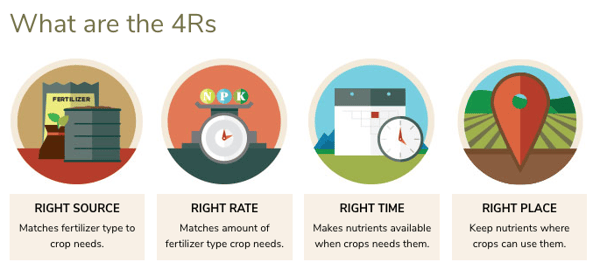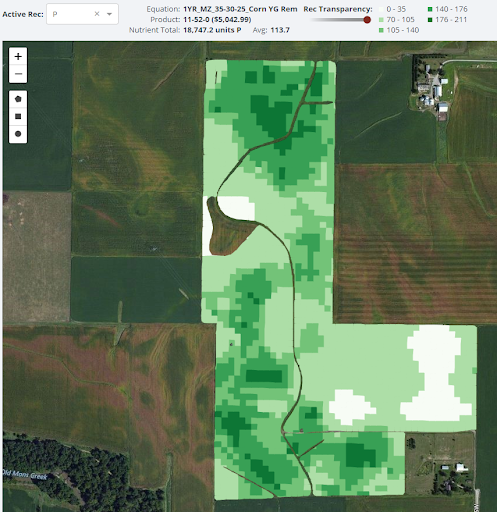The Greek philosopher, Heraclitus, is quoted as having said, “there is nothing permanent except change.” If that is the case, why do we fight it so hard? I believe the answer is because we are comfortable with where we are. In our comfort zone, we know exactly what to expect day in and day out, but in our desire to be comfortable, we remain exactly the same. If we don’t continue to learn and apply our new learned knowledge, how will we get better?
If we continue to stay the same with our farming operations, we know the likely yield outcome of our current practices. This can be a comforting thought but in our desire to be comfortable are we actually getting left behind?

Knowing what will happen with what we are currently doing is not the same as knowing if we could be doing better? Let’s talk about fertilizer, specifically. We know that each year we put on X amount of fertilizer and get X amount of yield. How do you know if that is your optimum rate? Could you put on more and receive more yield? Could you back down and not lose yield? Are there areas of the field where each of those scenarios would work? Do you know what the economic gain or loss is in each of these scenarios? Do you think switching from flat-rate application to variable-rate application is too hard? I’m here to tell you, it’s not hard and you can start working your way to answering these questions today.
Before we get into the easy process of starting to variable rate, let’s discuss the reasons WHY you should have a variable rate fertilizer and the 4R nutrient strategy. For those who don’t know, and as a refresher for the rest of us, the 4Rs of nutrient application are Right Source of fertilizer applied at the Right Rate at the Right Time and in the Right Place. All of these practices make us good stewards of the land which provides for us, but it’s also important from a data perspective to understand how these different practices affect our operations, our fields, and our bottom line.

Fertilizer is one place we have an opportunity to be more efficient with the inputs and dollars we have to invest on our acres every year. If you are flat-rating your fertilizer, you are likely leaving dollars on the table. Getting started with variable rate fertilizer does not need to be a painful process, especially with a trusted advisor to walk with you through the process.
The first step to getting started variable rate applying your fertilizer is to get a clear understanding of what your goals are for each field, or even better, developing a unique zone within a field. Do you want to fertilize for your yield goal(s) in each zone for the coming year? Or do you want to fertilize based on what your yield removed the past year? Maybe you want to fertilize to build to a certain soil ppm over 2-4 years? Or some combination of all of the above.
Once you and your advisor have decided on a course of action that supports your goals, together you will create or select an equation, called a prescription, to run on the field. This is where you might be hesitant of what the equation kicks out, what if it is a lot more than what you have been applying in the past or not as much as what you would normally apply? Fear not, again, this is not a painful process. We can adjust the equation to match the average ppm you would put on the field if you were flat-rate applying fertilizer. So if you are used to putting on 100 lbs of MAP, we can adjust the prescription to match the total amount of product, average units of nutrient, average cost/ac, or total cost.

By adjusting the prescription this way you are not applying any more or any less fertilizer than you have historically applied and are spending the same amount of money that you normally would. However, what is different is that we are being smarter about WHERE we are applying fertilizer based on WHERE it is going to give you the best return to reach your goals.

Now that you have invested in the variable rate method, it’s important to validate the rates you are applying. This is what Premier Crop does different than any other company, we test and prove the prescription to make sure it is the right rate. This is continuous learning like Heraclitus mentions, there is always change, so learn from it and adapt. Premier Crop will tell you if it is the optimum rate for that area of the field and how you need to change. Again, this is very easy to do in the Premier Crop system using our testing trials called, Enhanced Learning Blocks. Enhanced Learning Blocks allow us to easily test fertilizer product rates (and much more) on your own acres to find optimum rates in each area of your field. It takes no extra work on your part to execute, all you have to do is farm, and it provides powerful insights to be more efficient and build confidence that you are investing your money wisely. It also confirms the right rate in each right place of your field.
Being confident in your investments, along with being a good steward is as easy as setting your goal, running an equation, adjusting it to your comfort level, and checking your work. All of this process is made even easier with the help of a Premier Crop Advisor. What are you waiting for?
